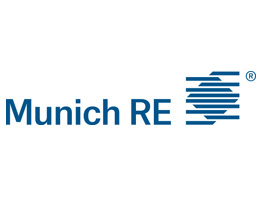Sponsored: myMatrixx
A Best-in-Class Portal Should Do More than Store Data

Today, every PBM has a portal. They are invaluable tools to help front-line claims staff manage the pharmacy component of workers’ compensation claims.
But not all portals are created equal.
The rapid pace of advancement in technology means that these systems quickly become outdated. Customers expect speed, accuracy and ease-of-use — benefits that not every portal can deliver.
“Ultimately, our job is to make the claims examiner’s life easier,” said Hollie Lamboy, Vice President, Product Development at myMatrixx. “A best-in-class portal should be patient-centric and user-friendly, with all of the information and functionality that a claims person needs right at their fingertips.”
When myMatrixx merged with Express Scripts in 2017, the companies each had their own portal, but both needed a refresh. “We decided to create something new by keeping the core functions of each portal, but with modern technology and design,” Lamboy said.
A client focus group provided feedback on what capabilities they desired in a PBM portal that weren’t currently available in one package. A few key features included intuitive design and ease-of-use, automation and a comprehensive view of an injured worker’s pharmacy data. myMatrixx also knew the portal had to be scalable to meet clients’ needs as they grew and that patient safety was paramount.
myPassport was built with these goals in mind.
“The end result was more than your average portal. myPassport is a step above what most companies expect from their PBM,” Lamboy said.
The new portal delivers these key benefits:
Improved Patient Safety and Better Outcomes

Hollie Lamboy, Vice President, Product Development, myMatrixx
In order to ensure that an injured worker is getting the most appropriate treatment, the claims examiner has to know every medication that he or she is taking — whether or not the medicine is related to the compensable injury. Without this information, the risk of adverse drug interactions or dependencies increases.
“If a patient has a back injury, but is already taking an anti-inflammatory or pain medication for a pre-existing knee injury, that’s information that the claims team needs to know before they approve any more prescriptions,” Lamboy said. “myPassport will present all of this information in real time, in one centralized location so that the claims examiner can understand the injured worker more holistically.”
Comprehensive data can also help claims staff spot the red flags of excessive refills or duplicate prescriptions that suggest pharmacy- or doctor-shopping. Access to this information allows them to intervene if necessary and make more appropriate medication decisions.
All of this keeps the injured worker at the center of the care plan, advances patient safety and improves clinical outcomes.
High-Touch Customer Service
Traditionally, the best way to get a question answered is to pick up the phone and call an expert. But this method of communication is not always the most convenient. Lengthy menus, hold times and the chance of not connecting with anyone at all can make phone calls inefficient and frustrating.
To give users more options, myPassport includes a chat feature that connects claims professionals directly with a myMatrixx representative instantaneously. Users can also forgo a conversation and request immediate action using the portal’s “memo” function.
“If there’s just one item that you need to get done quickly, you can create a memo that we see immediately and know to take action on,” Lamboy said. “The end user gets an automated response when we have taken care of their request. It’s a quick way to access our experts and get things done without the back-and-forth.”
Of course, those same experts are available by phone if customers have a more complicated request, but various communication avenues give claims professionals the benefit of convenience and flexibility.
Claims Management Efficiency and an Intuitive Workflow
When done manually, prescription authorization can introduce a number of obstacles that ultimately affect the injured worker and the workers’ comp payer.
Traditionally, if a prescribed drug falls outside of the formulary, the pharmacist must contact the PBM for authorization. The PBM first needs to gather its data on that particular patient, confer with the payer on whether authorization is warranted, and in most cases, manually initiate it. The pharmacist waits for the authorization to go through before dispensing the medication. All the while, the injured worker is waiting at the counter, likely growing more confused and frustrated by the minute.
To save themselves time and avoid this headache, the pharmacist could forgo the process altogether and bill directly to a third party. Those bills will eventually have to be back-processed by a claims team, costing both time and additional money.
myPassport automates authorization to remove these speed bumps.
“If a prescription requires authorization, we communicate immediately with the pharmacy and initiate the authorization automatically through myPassport without the pharmacist having to call us. Because all of the patient data is centralized, the information required to make a decision is right at the claims examiner’s fingertips and an initiated decision can be made with the click of a button,” Lamboy said.
Streamlining this process not only boosts efficiency for the claims examiner, but also gets injured workers the medications they need in a timely manner.
User-friendly and Responsive Design Functionality
Comprehensive data, fast customer service and automated processes mean little if users struggle to access them. For any technology to work, it must be easy to understand.
myPassport’s intuitive and responsive design makes it easy to use on any device and with minimal training necessary.
“The screens of myPassport automatically adjust based on the device that you’re using, whether you’re on a desktop computer, laptop, tablet or even a mobile phone,” Lamboy said. This is critical, since many people work on the go and a claims examiner or nurse case manager may not be sitting at his or her desk when needing to check an injured worker’s information.
Responsive design eliminates the need to download an app in order for the portal to work on mobile devices. Single sign-on functionality also helps users avoid the hassle of remembering usernames and passwords every time users access the portal.
“Most importantly from a user-friendly perspective, it doesn’t require a lot of training. You don’t have to be technically inclined to use myPassport. It’s designed to be simple,” Lamboy said.
In that vein, the portal is also flexible so clients have only the features they need. Unneeded tools can be removed to streamline the experience even further, or additional capabilities can be added to fit unique requirements. This means users don’t waste time or attention navigating through the features they don’t use.
“We know that every client’s business is different and that’s been a central part of our approach in developing myPassport,” said Lamboy.
Access to the myMatrixx Experience
In its most basic form, a PBM portal is a tool enabling claims professionals to get the data they need to make pharmacy decisions at a single point in time. The biggest benefit of myPassport is that it goes beyond this day-to-day decision making to give clients a comprehensive view of their entire pharmacy program.
“myPassport is that gateway to looking at your pharmacy program through the eyes of a PBM,” Lamboy said.
The portal provides quick access to the myMatrixx staff and pharmacy program management resources. These include relative document repositories, a built-in knowledge base to help users instantly understand the purpose of a drug or prescription, clinical messaging support and integrated security features to keep patient data safe.
Combined with superior customer service and ease-of-use, these capabilities make myPassport more than just a pharmacy portal, but an integral component of overall claims management.
“The claim examiner’s job is to get a patient back to work as quickly as possible while containing costs. Pharmacy management is a small but critical piece of that mission — and myPassport gives that professional everything they need to accomplish it,” Lamboy said.
To learn more, visit https://www.mymatrixx.com/pbm-solutions/mypassport/.
This article was produced by the R&I Brand Studio, a unit of the advertising department of Risk & Insurance, in collaboration with myMatrixx. The editorial staff of Risk & Insurance had no role in its preparation.










